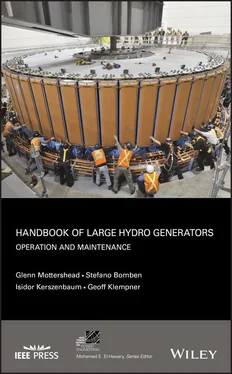1 ...8 9 10 12 13 14 ...17 For the time being, let us define another element of AC circuit analysis: the power triangle . From the relationships shown above among S , P , Q , E , I , and φ , it can be readily shown that S , P , and Q form a triangle. By convention, Q is shown as positive (above the horizontal), when the circuit is inductive, and vice versa when capacitive (see Figure 1.3-4).
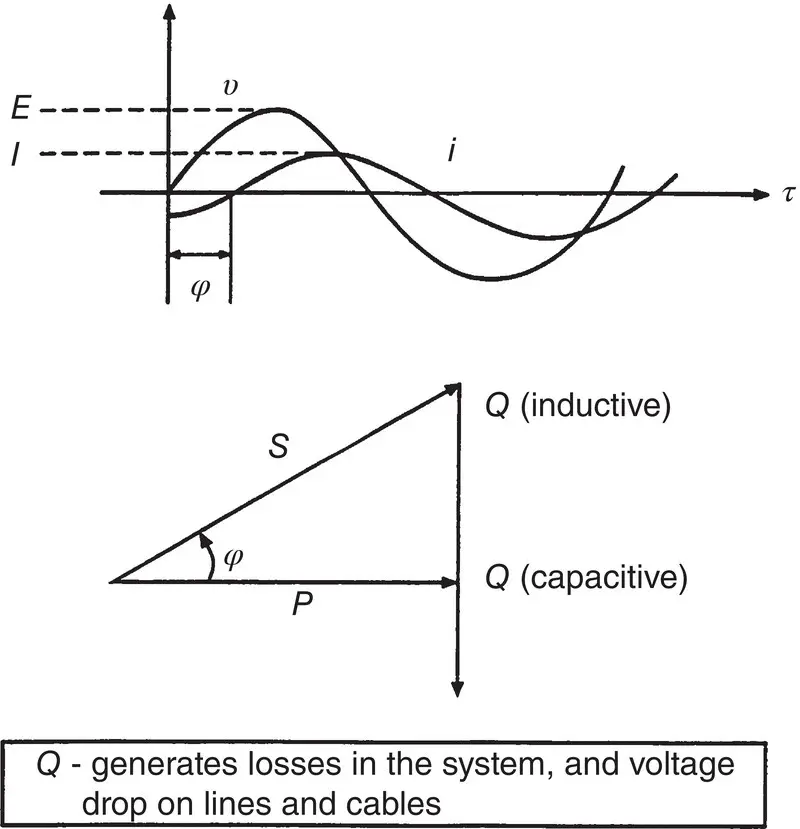
Figure 1.3-4Definition of the “power triangle” in a reactive circuit.
To demonstrate the use of the power triangle within the context of large generators and their interaction with the power system, we need to consider a one‐line schematic that includes the generator, transmission system, and the connected load at the end (see Figure 1.3-5).
The voltage required at the load, so that it will operate correctly, is given as 1000 V. The transmission line resistance and reactance are provided and the line impedance calculated as shown, using the power triangle approach. If we now consider an actual load for the simple system of Figure 1.3-5, we can calculate the current drawn by the load and the voltage required from the generator source to compensate for all the line losses and voltage drop across the line. Two cases are provided to illustrate the effect of a purely resistive load versus a load with a reactive component include (see Figures 1.3-6and 1.3-7). Working out the required voltage from the generator for the two different loads by the power triangle method shows how reactive loads greatly affect the power system operation and the generation requirements. Reactive power compensation is a large part of synchronous generator operation and affects generator design in a significant way, as will be discussed later on in Chapter 2. There is a delicate balance between generation and load that is clearly shown by the two cases presented and the comparison of operational results (see Table 1.3-1).
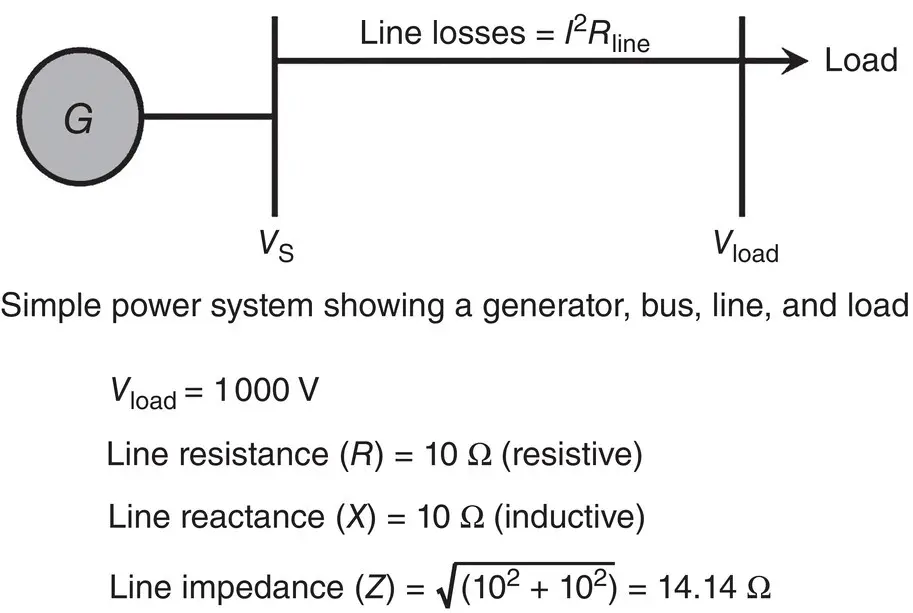
Figure 1.3-5Schematic of a simple system in one‐line form.
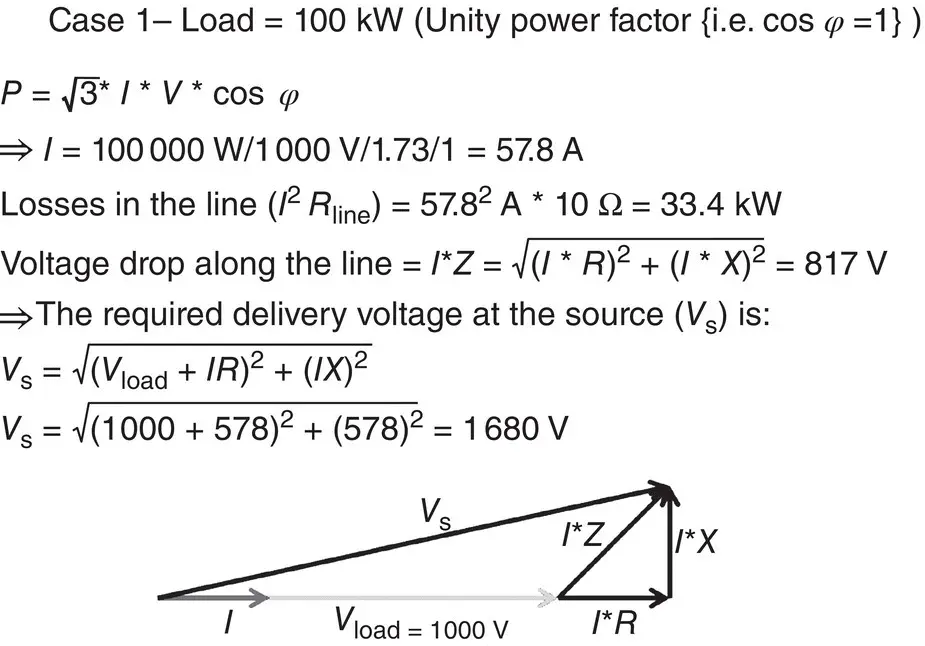
Figure 1.3-6Case 1. The load is purely resistive in this example, and the system is operating at the “unity” power factor.

Figure 1.3-7Case 2. The load is resistive and inductive in this example, and the system is operating in the “lagging” power factor range.
Although the “real” power consumed is the same, the addition of the reactive component in Case 2 has caused an increase in current drawn from the generator, an increase in line losses, a higher volt drop across the line, and, therefore, a higher voltage required from the generator source.
TABLE 1.3-1 A comparison of Case 1 and Case 2
| Load |
100 kW |
100 kW and 50 kVAR |
| Power consumed by the load (kW) |
100 |
100 |
| Current (A) |
57.8 |
64.6 |
| Line losses (kW) |
33.4 |
41.6 |
| Voltage drop along line (V) |
817 |
913 |
| Required delivery voltage at generating end (V) |
1680 |
1892 |
The above examples show that there is a considerable demand placed on the generator to operate the various loads on a system. In reality, the generator terminal voltage V sis constant, plus or minus 5% by design. As the load increases or decreases, the current from the generator changes significantly and the voltage drop on the system V loadrequires compensation ( Figure 1.3-8). Therefore, the second major function of the generator, after production of “real” power, is to produce “reactive” power to help control the voltage on the grid, which will also be discussed later in Chapter 4.
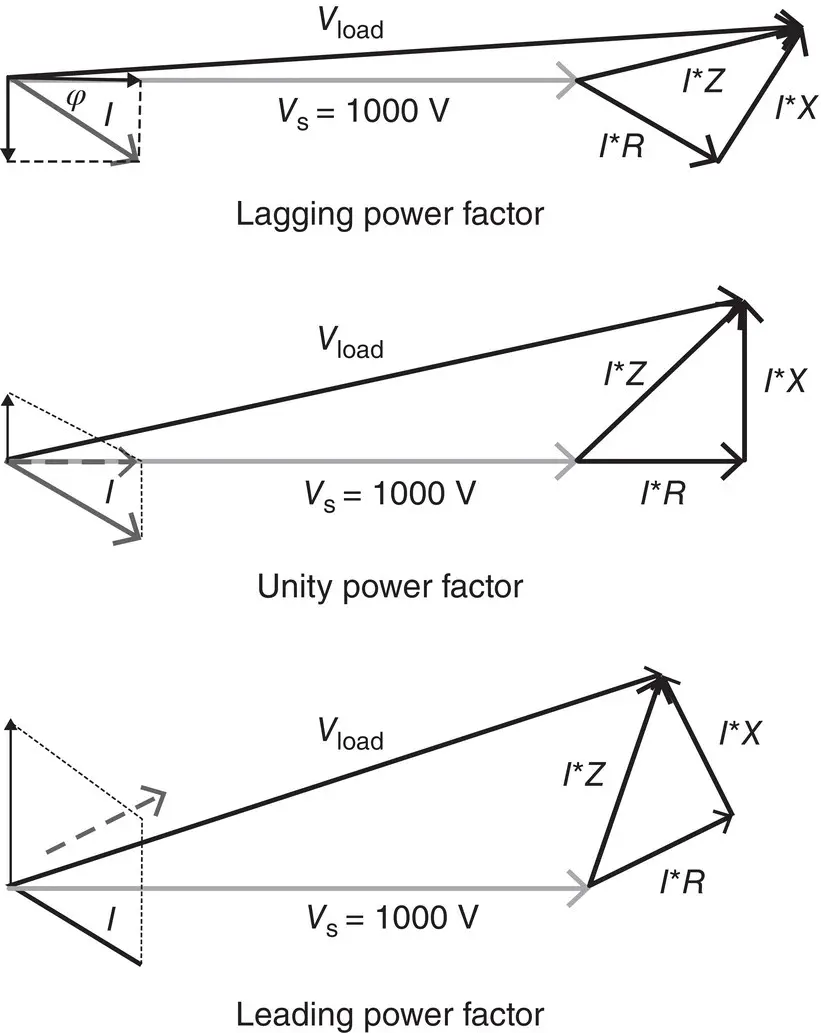
Figure 1.3-8The effect on the voltage drop as the circuit goes from lagging through unity to leading power factor operation.
The two‐wire AC circuits discussed above (called single‐phase circuits or systems), are commonly used in residential, commercial, low voltage, and low power industrial applications. However, all electric power systems to which industrial generators are connected are three‐phase systems. Therefore, any discussion in this book about the “power system” will refer to a three‐phase system. Moreover, in industrial applications, the voltage supplies are, for all practical reasons, balanced, meaning that all three‐phase voltages are equal in magnitude and apart by 120 electrical degrees. In those rare events in which the voltages are unbalanced, the implications for the operation of the generator will be discussed in other chapters of this book.
Three‐phase electric systems may have a fourth wire, called “neutral.” The “neutral” wire of a three‐phase system will conduct electricity if the source and/or the load are unbalanced. In three‐phase systems, two sets of voltages and currents can be identified. These are the phase and line voltages and currents.
Figure 1.4-1shows the main elements of a three‐phase circuit. Three‐phase circuits can have their sources and/or loads connected in wye (also known as “star”) or in delta forms. (See Figure 1.4-2for a wye‐connected source feeding a delta‐connected load.)
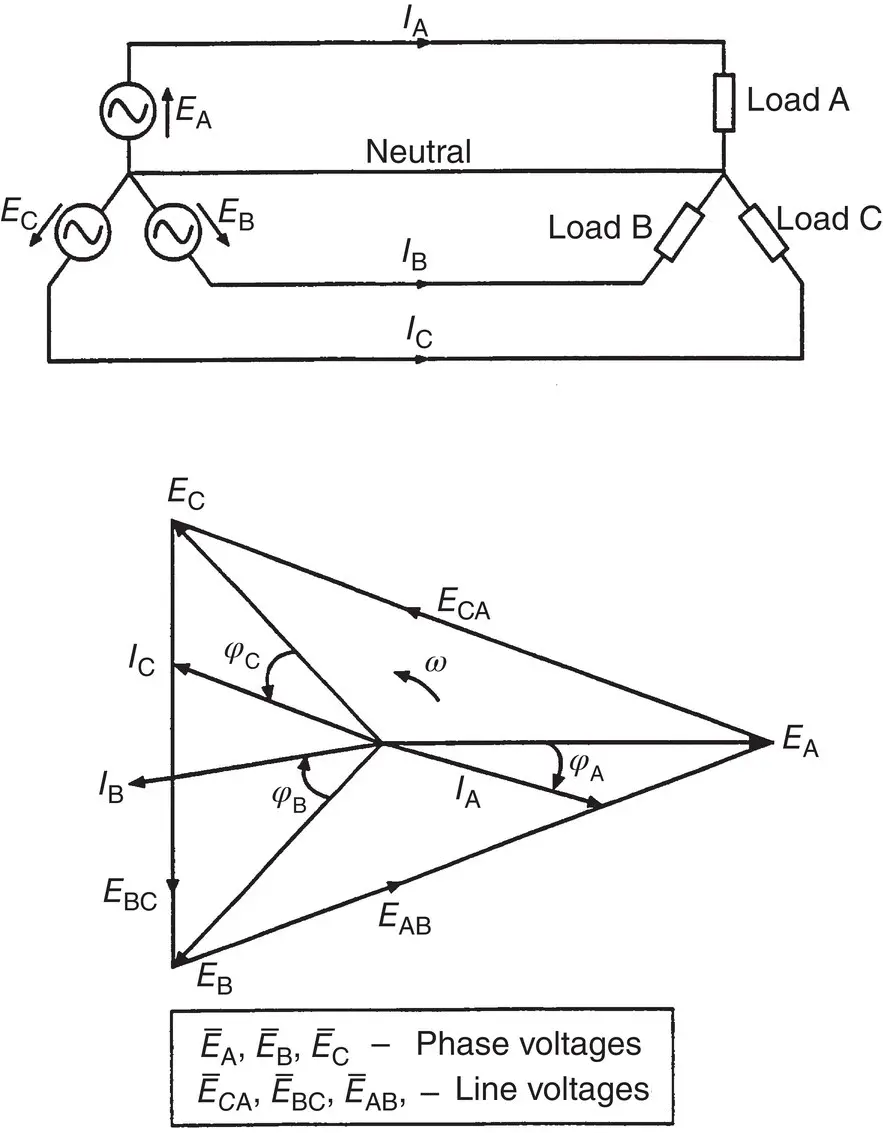
Figure 1.4-1Three‐phase systems. Schematic depiction of a three‐phase circuit and the vector (phasor) diagram representing the currents, voltages, and angles between them.
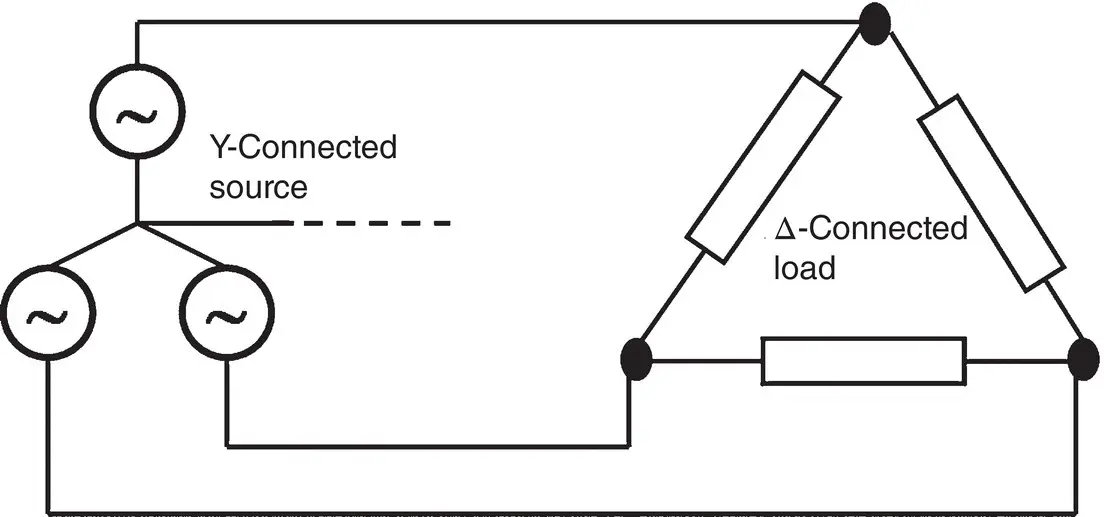
Figure 1.4-2A “wye‐connected” source feeding a “delta‐connected” load.
Almost without exception, hydro generators have their windings connected in wye (star) form. Therefore, in this book, the source (or generator) will be shown wye‐connected. There are a number of important reasons why hydro generators are wye‐connected. They have to do with considerations about its effective protection as well as design (insulation, grounding, etc.). These will be discussed in the chapters covering stator construction and operations.
On the other hand, loads can be found connected in wye, delta, or a combination of the two. This book is not about circuit solutions; therefore, the type of load connection will not be brought up herein.
1.5 BASIC PRINCIPLES OF MACHINE OPERATION
In Section 1.1, basic principles were presented showing how a current flowing in a conductor produces a magnetic field. In this section, three important laws of electromagnetism will be presented. These laws, together with the law of energy conservation, constitute the basic theoretical bricks on which the operation of an electrical machine is based.
Читать дальше
